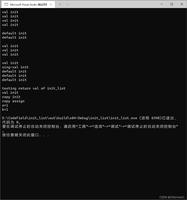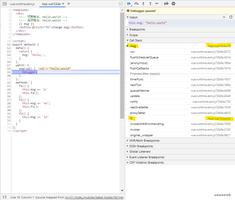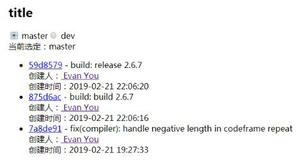如何找出几何中位数
问题是:
给定具有x和y坐标的N个点(在2D中),找到一个点P(在N个给定点中),以使从其他(N-1)个点到P的距离之和最小。
这一点通常称为“
几何中值”。除了幼稚的算法以外,是否有任何有效的算法可以解决此问题O(N^2)?
回答:
我曾经使用模拟退火为本地在线法官解决了类似问题。那也是官方的解决方案,程序获得了AC。
唯一的区别是,我必须找到的点不必一定是N给定点的一部分。
这是我的C ++代码,N可能和一样大50000。该程序在0.1s2GHz的奔腾4上执行。
// header files for IO functions and math#include <cstdio>
#include <cmath>
// the maximul value n can take
const int maxn = 50001;
// given a point (x, y) on a grid, we can find its left/right/up/down neighbors
// by using these constants: (x + dx[0], y + dy[0]) = upper neighbor etc.
const int dx[] = {-1, 0, 1, 0};
const int dy[] = {0, 1, 0, -1};
// controls the precision - this should give you an answer accurate to 3 decimals
const double eps = 0.001;
// input and output files
FILE *in = fopen("adapost2.in","r"), *out = fopen("adapost2.out","w");
// stores a point in 2d space
struct punct
{
double x, y;
};
// how many points are in the input file
int n;
// stores the points in the input file
punct a[maxn];
// stores the answer to the question
double x, y;
// finds the sum of (euclidean) distances from each input point to (x, y)
double dist(double x, double y)
{
double ret = 0;
for ( int i = 1; i <= n; ++i )
{
double dx = a[i].x - x;
double dy = a[i].y - y;
ret += sqrt(dx*dx + dy*dy); // classical distance formula
}
return ret;
}
// reads the input
void read()
{
fscanf(in, "%d", &n); // read n from the first
// read n points next, one on each line
for ( int i = 1; i <= n; ++i )
fscanf(in, "%lf %lf", &a[i].x, &a[i].y), // reads a point
x += a[i].x,
y += a[i].y; // we add the x and y at first, because we will start by approximating the answer as the center of gravity
// divide by the number of points (n) to get the center of gravity
x /= n;
y /= n;
}
// implements the solving algorithm
void go()
{
// start by finding the sum of distances to the center of gravity
double d = dist(x, y);
// our step value, chosen by experimentation
double step = 100.0;
// done is used to keep track of updates: if none of the neighbors of the current
// point that are *step* steps away improve the solution, then *step* is too big
// and we need to look closer to the current point, so we must half *step*.
int done = 0;
// while we still need a more precise answer
while ( step > eps )
{
done = 0;
for ( int i = 0; i < 4; ++i )
{
// check the neighbors in all 4 directions.
double nx = (double)x + step*dx[i];
double ny = (double)y + step*dy[i];
// find the sum of distances to each neighbor
double t = dist(nx, ny);
// if a neighbor offers a better sum of distances
if ( t < d )
{
update the current minimum
d = t;
x = nx;
y = ny;
// an improvement has been made, so
// don't half step in the next iteration, because we might need
// to jump the same amount again
done = 1;
break;
}
}
// half the step size, because no update has been made, so we might have
// jumped too much, and now we need to head back some.
if ( !done )
step /= 2;
}
}
int main()
{
read();
go();
// print the answer with 4 decimal points
fprintf(out, "%.4lf %.4lf\n", x, y);
return 0;
}
然后,我认为从您的列表中选择最接近(x, y)此算法返回值的列表是正确的。
该算法利用了维基百科上有关几何中位数的内容:
但是,使用迭代过程来计算几何中值的近似值很简单,在该过程中,每个步骤都会产生更精确的近似值。这种类型的过程可以从以下事实得出:到采样点的距离之和是凸函数,因为到每个采样点的距离是凸的而凸函数之和保持凸。因此,减少每一步距离之和的过程不能陷入局部最优状态。
在Endre Weiszfeld
[4]的工作之后,这种类型的常见方法称为Weiszfeld算法[4],是迭代地重新加权最小二乘的一种形式。该算法定义了一组权重,这些权重与从当前估计值到样本的距离成反比,并根据这些权重创建一个新的估计值,即样本的加权平均值。那是,
上面的第一段说明了它的工作原理:由于我们要优化的函数没有任何局部最小值,因此您可以通过迭代地改进它来贪婪地找到最小值。
将此视为一种二进制搜索。首先,您估算结果。重心是一个很好的近似值,我的代码在读取输入时会计算重心。然后,您可以查看与此相邻的点是否为您提供更好的解决方案。在这种情况下,如果某点距step您当前点的距离为零,则该点被视为相邻点。如果更好,那么最好放弃当前点,因为正如我所说,由于您要最小化的函数的性质,这不会使您陷入局部最小值。
此后,将步长减小一半,就像在二进制搜索中一样,并继续进行操作,直到获得您认为足够好的近似值(由eps常数控制)为止。
因此,算法的复杂度取决于您希望结果的准确性。
以上是 如何找出几何中位数 的全部内容, 来源链接: utcz.com/qa/433457.html







